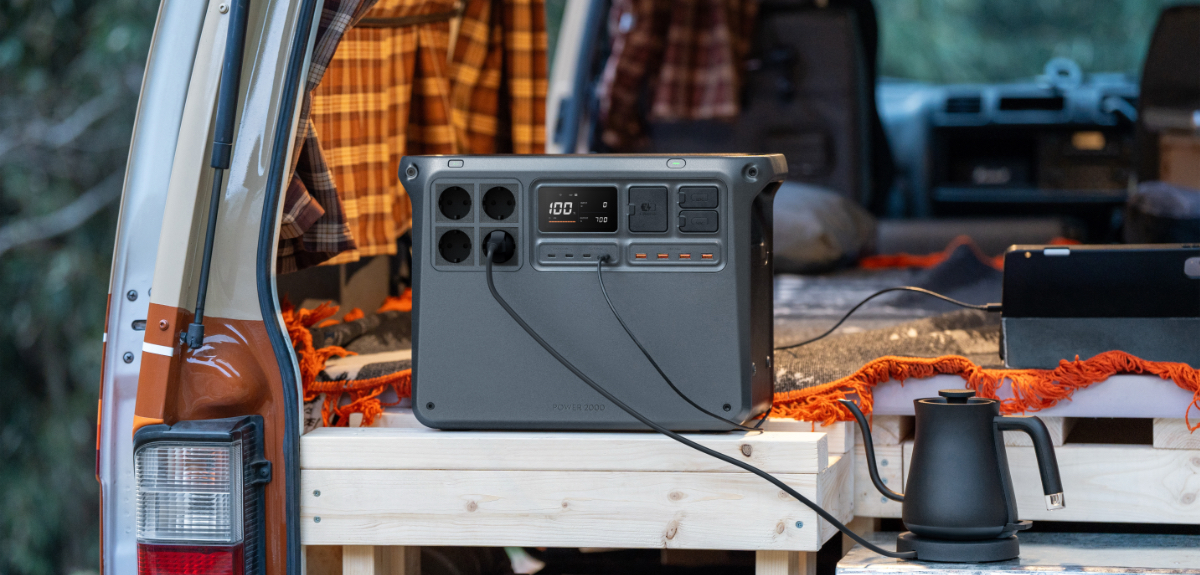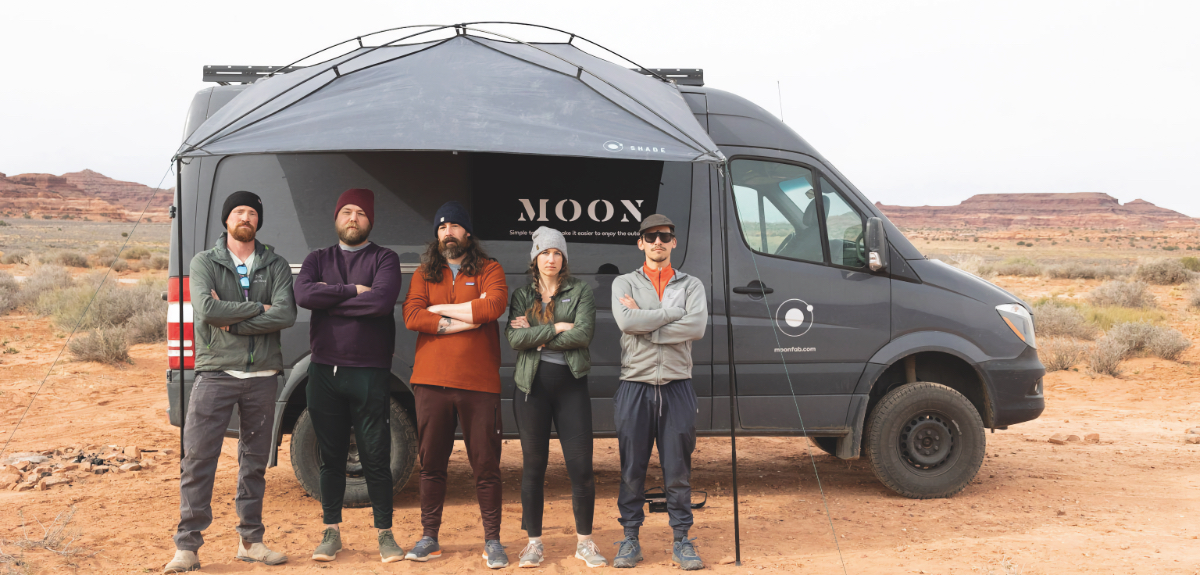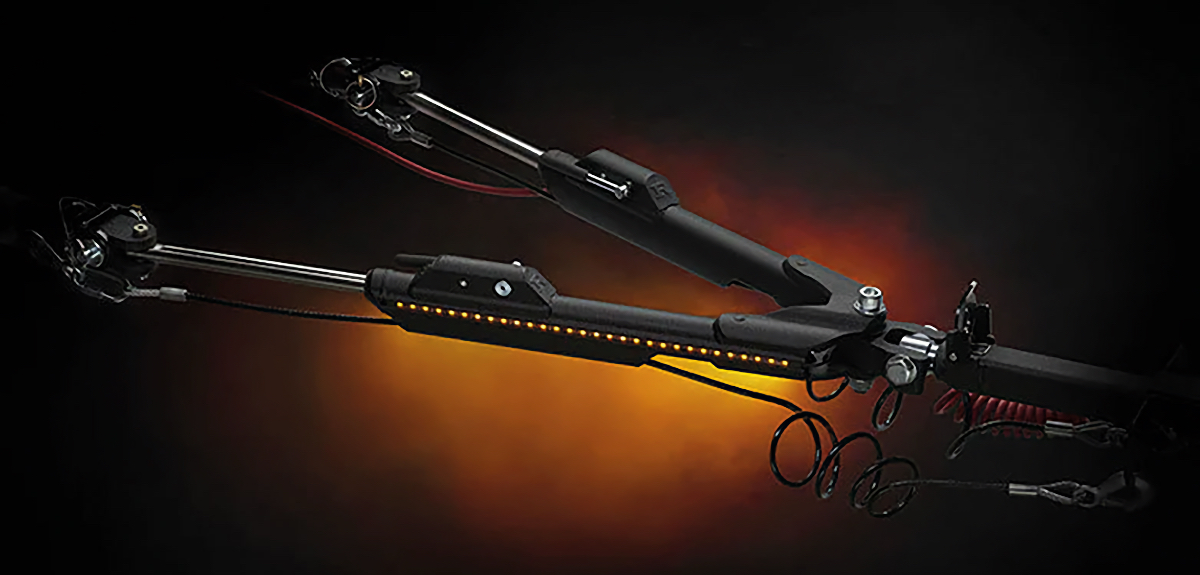Tech Q&A – August 2022
A Short-Lived Power Jack, Accessible Trailer, MPPTs and Lithium Batteries, a Striking Slideout, and a Solar Conversion
Image Caption:
Power A-Frame Jack Failure
Q: My RV’s FIC power A-frame (tongue) jack started failing within two years on our 2021 Jayco 25RB trailer, which was purchased in Oregon. The light was failing to go off completely and would remain dimly lit when switched off. I took it in, and the dealer said it was full of water. (It was never submerged.) The dealer failed to stop the light from coming on dimly, so I insisted on them swapping out the original one that came with the Jayco. I kept it covered and the same thing happened again. It did not even last a year and a half!
—Brad Jeffreys, via email
A: FIC is made by WESCO; your RV probably has the ETJ3500 model. Have you tried asking WESCO’s customer service about this problem? I searched and couldn’t find any instances of this same problem. It seems like the plastic cover should keep the rainwater out. Did water get in around the switches? Is it very wet where you keep it, such as in a coastal region? It could be condensation inside the motor. Before giving up, I’d try drilling a few small holes on the bottom of the motor to let air circulate and moisture drip out.
Charging Lithium Batteries with an MPPT
Q: I know this subject has been beaten to death, but I can’t get an answer on one aspect. I have a 22-foot 1983 Alpenlite fifth wheel trailer with an EpEver MPPT solar-charge controller with Renogy MT-50 monitor; four 12-volt 100 amp-hour (Ah) lithium batteries, and 500 watts/28 amps of solar-panel rating. The controller uses voltage drop to start the charging process. The lithium batteries’ capacity drops, but the voltage stays constant. If I put heavy loads like the A/C or microwave on the inverter or the 12-volt forced-air heater, the controller will output up to the amperage available from the panels. As soon as those items are turned off, the charging drops down to a minimum, but the battery capacity reading also drops. It went from 100% to 66% in three days (without A/C). I have set the charge parameters per the battery manufacturer, which is very close to those shown on YouTube. Am I overlooking something?
—Stan Wilson, Capitola, California
A: First, let me bring our other readers up to speed on this solar-charge controller terminology. An MPPT (Maximum Power Point Tracker) controller is a high-frequency DC-to-DC converter. It takes the DC input from the solar panels, changes it to high-frequency AC, and converts it back to a different DC voltage and current (amperage) to more closely match the panels to the charging needs of the batteries.
Stan, you made a good choice by going with an MPPT controller. MPPT technology is up to 35% more efficient than its rival PWM (Pulse Width Modulation). Think of an MPPT controller as being a “smart” DC-DC converter.
A PWM controller is typically simpler and less expensive. It acts as an electronic switch between the solar panels and the battery. The switch is ON when charging is in bulk charge mode. The switch goes ON and OFF as needed (pulse width modulated) to hold the battery voltage at the absorption voltage. With a PWM controller, current is taken from the panel at just above the battery voltage. When the switch is o or open, all the panel’s output is wasted. With an MPPT solar charge controller, the current is drawn out of the panel at the panel’s “maximum power voltage.”
My best guesses are that either (1) the controller is not set up ideally for your RV’s panels and batteries, that (2) you are using more power than you realize, or (3) not getting as much sun as needed to keep up with demand. Lithium batteries require a very different charging regime than lead-acid batteries. I suggest you contact the manufacturer of the controller and discuss setup and operation. The company is in China, so email is best ([email protected]), and/or visit a more local expert in RV solar installations.
For superb and knowledgeable advice about RV-specific solar installations, contact AM Solar in Springfield, Oregon.
Converting to Solar
Q: I have a 2021 23-foot Heartland North Trail. I want to replace the 3,500-watt generator with solar panels. When dry camping, I will be running an electric water heater at 12 amps, charger at 14 amps, and refrigerator at 3.5 amps, plus cabin lights, a 10-cup coffee maker, and a toaster. I was planning on charging the trailer’s battery using solar. How would I figure out the number of solar panels needed?
—Wayne Braband, via email
A: Your RV’s roof isn’t large enough for all that! If you run the fridge and water heater on propane and heat your coffee with the propane stove, you may be able to work something out with solar. Typical rooftop panels on a trailer your size put out maybe 500 watts or so, a long way from 3,500. Clouds and sun position can greatly reduce that output. You also didn’t mention if you were planning to run an air conditioner, which you can’t do with a few solar panels, but can do with the 3,500-watt generator. When you convert 12-volts DC to 120-volts AC with an inverter, a12-amp (120-volt) draw requires more than 120 amps from 12 volts. I suggest you contact an RV solar specialist and discuss your needs with them.
Rough Riding Ford F-53
Q: In the May 2022 issue a gentleman inquired about his rough-riding motorhome on a Ford F-53. Why did you not mention the LiquidSpring upgrade?
—Dick Reed, via email
A: A LiquidSpring upgrade extensively modifies the suspension. It’s not cheap, but it works well. LiquidSpring is based in Indiana and offers kits for a number of RV and truck models, including the F-53. Prices for the F-53 start at around $14,000 for the rear only, and $22,000 and up for front and rear suspensions, depending on where the installation is done.
Broken Leaf Springs
Q: We have a 2010 Shadow Cruiser 185FBS travel trailer that was made by Cruiser RV in October of 2009. Recently, a leaf spring broke about 6 inches from the front shackle. This was on the front axle of a two-axle lightweight 18-foot trailer. I can’t say exactly when it broke. It seemed fine until the next day’s new campsite when I went to put the scissors chock between the wheels on the curbside. Earlier, during that day’s drive, I had pulled off the highway for a scenic view and discovered a big drop of about 6 inches from the edge of paving to the dirt pull-off that I couldn’t see until it was too late. Six months prior to that, I had turned a corner too tight, and the curbside wheels went up over a curb. But in the months after that, and before the spring broke, I had used the scissors chocks frequently, so the spring was still intact.
Lippert recommended replacing all four leaf springs due to their age, which I did. The axles are equipped with Lippert’s equalizers and Never-Fail Bushings with wet bolts had previously been flipped using their kits, and were previously retrofitted with their self-adjusting brakes. The trailer’s cargo capacity is 2,714 pounds, and GVWR is 5,854 pounds. I have weighed everything that I typically carry in the trailer for camping, and that doesn’t exceed 900 pounds including food, clothing, and everything in the storage compartment. The 36-gallon-capacity freshwater weighs about 300 pounds, so I am never anywhere near the max GVWR. I am wondering if this is very common with older trailers since I have not heard of this happening before. I now carry a spare leaf spring!
—Thomas Helm, Durango, Colorado
A: Springs don’t break often, but they do fail sometimes, just as any mechanical component can break. The most common causes are hitting curbs and potholes, overloading, extremely cold weather, and sometimes a flaw in the metal. I suspect the drop-off is what did your trailer’s leaf spring in. Most people don’t replace springs until one or more break. If carrying a spare leaf spring gives you peace of mind, and you have the space and carrying capacity, I don’t see any harm in it.
ADA Accessible Trailers
Q: I’ve been looking for accessible travel trailers or toy haulers, but I haven’t had much luck. Having one built is a little out of my price range. Do you know of any companies in the Midwest that make these types of modifications? We’ve been considering buying used and making it fit our needs. Any advice would be much appreciated.
—Tony Quijano, Des Moines, Iowa
A: There are a few accessible trailers on the used market. You may want to start by visiting wheelchairtravel.org for more information. Toy-hauler trailers are easier to use for wheelchairs because you can use the rear ramp as is to save money. It will take some effort to find what you want, but this would probably be your lowest-cost option. Buying an unmodified trailer and having it adapted to your needs would likely be costlier. Two trailers designed for accessibility are the Harbor View HV-36CKBB travel trailer and the Dune Sport H-2 28-Foot Custom Wheelchair Accessible Toy Hauler. Creative Mobile Interiors modifies coaches for handicap accessibility.
TrailerLegs Tire Protector
Q: I am thinking about buying a set of TrailerLegs to support my 16,105-pound-GVWR fifth wheel during storage to protect the tires. I emailed the company, and they say even though a set of them are rated at 16,000 pounds, they will support my trailer because 15–35% of the weight is supported by the front jacks. I am not too concerned about the weight issue but figured I would mention this. My real concern is, will these bend my fifth wheel’s axle over a long period of time? I plan to have them supported with these jacks for about two years to get the weight off the tires. I did some research and asked the company about it, but they chose not to respond to that aspect of the email. I found little about it online. In one video a guy talked about it but said he initially believed they would bend it, but then he thought about it and asked a mechanic who said it would not. What do you think?
—Mark Condon, Hockley, Texas
A: It’s a good idea to lift the weight off the tires while in storage for longer periods of time. TrailerLegs come in three weight ratings: 8,000, 16,000, and 24,000 pounds. The landing gear does carry a substantial portion of the weight, so the 16,000-pound kit should be fine for you. If you were going to lift the weight of the trailer from near the center of the axles, then I would be concerned. But the places on the axles where the TrailerLegs lift are right where you place a jack to lift a wheel off the ground, so it should not cause any problem. Make sure to use tire covers when the coach is stored, or better yet, an RV cover.
No Battery Power
Q: I have a KZ Escape 16RBT hybrid travel trailer. The electrical system is functional when connected to horsepower. But, there’s no power when connected to the battery. The new battery tested at 12.5 volts. After running on shore power, then switching to battery, the lights come on but begin to dim, and then there’s no power. The fan on the converter doesn’t come on as in the past. All fuses and breakers seem fine. What could be the cause, and how would I troubleshoot the issue?
—Alan Joe, Conyers, Georgia
A: There’s a good chance that the battery is not getting charged by the power converter. If you simply did a voltmeter check of the battery, it’s possible that it just had a surface charge. It should be load tested; most auto-parts stores will do this for free. Try putting the 12-volt lights on after the battery has been fully charged on a battery charger and then load tested. Measure voltage with the battery connected to the RV but no loads, then with the lights on, then again with the horsepower connected. Voltage should be at about 12.6 volts with a good battery, no load. It should drop a few tenths with the lights on. When the converter is powered up, voltage should begin to rise to at least 13.6 volts If the voltage doesn’t come up, look for problems with the battery-charging part of the converter.
Water Leak
Q: I have a 2015 Jayco 270 -foot fifth wheel trailer. The water system will hold pressure with the pump on, but leaks all or most of the water out when traveling and the pump is not on. I have not tried traveling with the pump running all the time, which is not a good idea in my mind, but I might try it next time. I’m interested to know if anyone else has run into this problem and, if so, what did it take to fix? I called Jayco and the young lady who answered customer service told me not to have water in the tank—not an answer to my question. It leaks in the middle of the back of the trailer; I had to cut a small hole in the underseal to let the water out.
—Glenn Brown, Willis, Texas
A: I suspect what is happening is that water is sloshing out of the freshwater tank’s vent system when you are towing. The hose that normally runs upward may have come off. There may also be a crack or something. I suggest that you fill the tank, take it for a short drive, then promptly remove enough of the under paneling to allow you to see the area of the leak while it’s still wet. Once you see exactly where it’s coming from, repair should be obvious.
Reader Tip: Sitcking Slideout Solution
We had the same problem as the “Sticking Slide-out” letter in the May issue with our 2019 Grand Design 376TH. The left front living-room slide would stop at the front 3 inches short of closing. It was not sticking or jamming. After a long call to Schwintek service, it turns out the controller counts motor revolutions of the front and rear motors. They can get out of sync and stop one motor too soon. The first thing he told me was to hold the button for five seconds after the slide stops moving every time you run it in or out. The controller uses this time to recalibrate itself.
Now to the fix. Find the slide-out controller for the affected unit, push and release the small white button six times, and hold it the seventh time until the light changes, indicating manual control. You then have 45 seconds to get inside and push the button to run the slide-out the rest of the way. Next, you run the slide until it stops, holding the button for five extra seconds. Do this 8–10 times as needed. Cycle the slide fully and see if it is operating correctly. Ours was almost right so I did the whole procedure one more time. That took care of the problem, and we have had no more trouble since following the technician’s advice to hold the button five seconds after the slide stops.
—Stephen Mackey, Edina, Minnesota
Thanks for writing, Stephen, and I’m glad you got yours working. About 70 brands use these slideout mechanisms. Here’s an official Schwintek video on recalibrating the slideout.
Have a Question?
Looking for answers on all things RV, including systems, engines, accessories, or construction? Submit it to our expert at [email protected] and it may be selected for publication. You must include your name, city and state, phone number (will not bepublished), and type and model of your RV.






